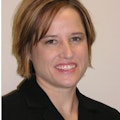Employee appreciation: A key to getting through the labor shortage
“The Great Resignation,” as it is often referred to, continues to be felt across the nation no matter the type of business. In our world, it’s being felt particularly hard by dental practice owners.
Key solutions are figuring out how to retain the quality employees you have, how to entice quality applicants to your job openings, and how to differentiate yourself from everyone else.
While it’s easy to think about throwing money at the problem by giving raises and offering signing bonuses, retention bonuses, and so on, that may not be the only (or best) answer. Money could fix some of the problems in the short term, but now is the time to play the long game.
While there are many ways to approach this situation, we’ll focus on one component: appreciation. Showing appreciation and expressing gratitude are essential elements to fighting back against the Great Resignation.
Related reading
The dynamics of praising your staff
Everyone needs appreciation
Everyone wants to be appreciated. Study after study has shown that every employee wants to know what is expected of them, how they’re doing, what they could or should do better, and that they’re making a difference. The fact is, everyone needs appreciation to do their best work, and the more the appreciation aligns with the individual the greater the impact.
It is a myth that appreciation takes too much time. Developing a habit of spending a few dedicated minutes on appreciation with employees on an ongoing basis actually takes very little time. Investing in workplace appreciation in this way can yield significant results.
The “languages” of appreciation
Drs. Gary Chapman and Paul White have studied this concept and found that people’s appreciation needs are not entirely the same. They included their findings in the 5 Languages of Appreciation in the Workplace.
One concept from the book is that we all have a “primary” and “secondary” language in which we like to receive appreciation. Those languages are:
- Quality time. Focused attention given to your employees, usually one-on-one.
- Words of affirmation. Find something in particular the person did and compliment that person for that action.
- Gifts. Gifts should be personal and unique to the individual and do not have to be expensive; a small, personal gift will go much further than an expensive impersonal one.
- Acts of service. Everyone can use a helping hand. What can you do to provide one?
- Touch. Obviously touch in the workplace can create issues, but an occasional high five or fist bump may, at times, be acceptable for certain people. Use this method cautiously.
Drs. Chapman and White developed a simple quiz that identifies a person’s primary and secondary languages. The assessment, coupled with an appreciation workshop, can lead to greater understandings and enhancements in the types and kinds of interactions that take place.
Set an example of appreciation
Many practice owners like to say that their practice wouldn’t exist without their top priority: their patients. But where would your practice be without your employees? Where would your employees be without you? It’s a symbiotic relationship. But often, those employers and employees do not have a habit of showing appreciation to each other. They should, and you can set the example.
The benefits of an engaged, appreciated workforce are numerous:
- Increased productivity and attendance
- Better employee interactions
- Improved relationships
- Increased job satisfaction
- Lower turnover and human resources costs
- Stronger loyalty
- Higher employee morale
- Enjoying coming to work!
It's been said that it is better to give than to receive. The science now backs that up. By giving to your employees and your coworkers, you become happier and more fulfilled. You start a positive feedback loop that yields tangible financial results and reduced stress. Give it a try. This may be what sets your practice apart from all the rest, starts you on the path of having a reputation as a great place to work, and keeps you from suffering at the hands of the Great Resignation.
Originally posted in 2022 and updated regularly
Editor's note: This article appeared in the March 2022 print edition of Dental Economics. Dentists in North America are eligible for a complimentary print subscription. Sign up here.
About the Author

Rebecca Boartfield, SHRM-SCP
Rebecca Boartfield, SHRM-SCP, is an HR compliance consultant for Bent Ericksen & Associates. For more than 40 years, the company has been a leading authority in human resources and personnel issues, helping dentists successfully deal with ever-changing and complex labor laws. To learn more, call (800) 679-2760 or visit bentericksen.com.
